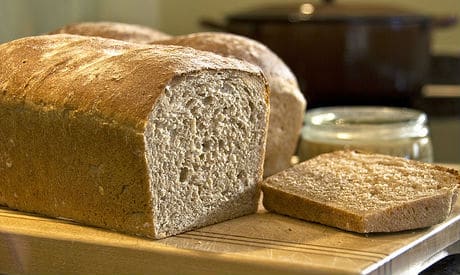
For consumers, it can be tough differentiating between whole wheat and whole grain products. In fact, it seems like often the only distinction to be made is between white (or refined flour) bread on one side and whole wheat bread on the other. But, there is actually a pretty big difference between whole grain bread and whole wheat bread. And, the difference can also depend on where you live.
Grains are the seeds of certain plants. The seed, or kernel, is made up of three parts: the bran, the endosperm and the germ. These all play a key role in your diet and contain valuable nutrients. In terms of whole grain products, there are tons, including wheat, rice, barley, oats, and rye. Whole grains contain all three parts of the kernel. The bran is the fiber-rich outer layer that protects the seed and contains B vitamins and trace minerals. The endosperm is the middle layer, which contains carbohydrates and proteins, and the germ is the small nutrient rich core that contains antioxidants, vitamin E, B vitamins and healthy fats.
Whole wheat products can be very different. When the whole grains are milled to make flour, these parts of the grain usually become separated and are then recombined to make specific types of flour, including whole wheat flour. If all parts of the kernel are used in relatively the same proportions of as they exist in the original kernel, then the flour can still be considered whole grain. However, what's important to note is these differences can also depend on where you live. In Canada, under their Food and Drug Regulations up to 5 percent of the kernel can be removed to help prolong the shelf life of the flour. Because of this, portions of the kernel are then removed. What’s removed contains much of the germ and some of the bran and once this has been removed, it can no longer be classified as a whole grain product. However, in the United States, whole wheat flour is made entirely of whole grains, and anything gone through the milling process is classified as a refined grain.
Current research on the subject has indicated that whole grains are an essential part of a healthy diet. Grains are naturally low in fat and are a good source of vitamins and minerals, which makes them a healthy option. They have now also been linked to a lower risk of developing diabetes, heart disease, and certain cancers.
Based on current research (and of course, my personal opinion), my recommendation would be to choose 100 percent whole grain products as much as possible. Refined products provide none of the benefits of a whole grain product, which offers important vitamins, minerals, and nutrients.
Photo Credit: madlyinlovewithlife










